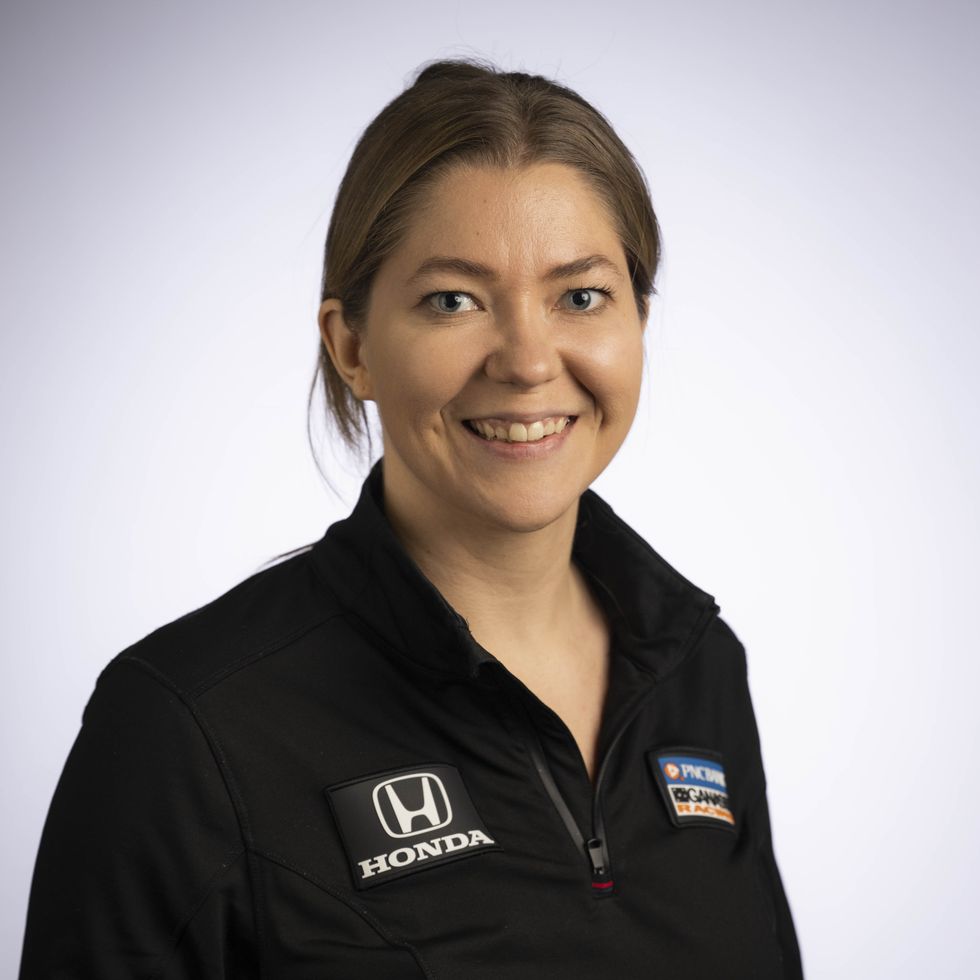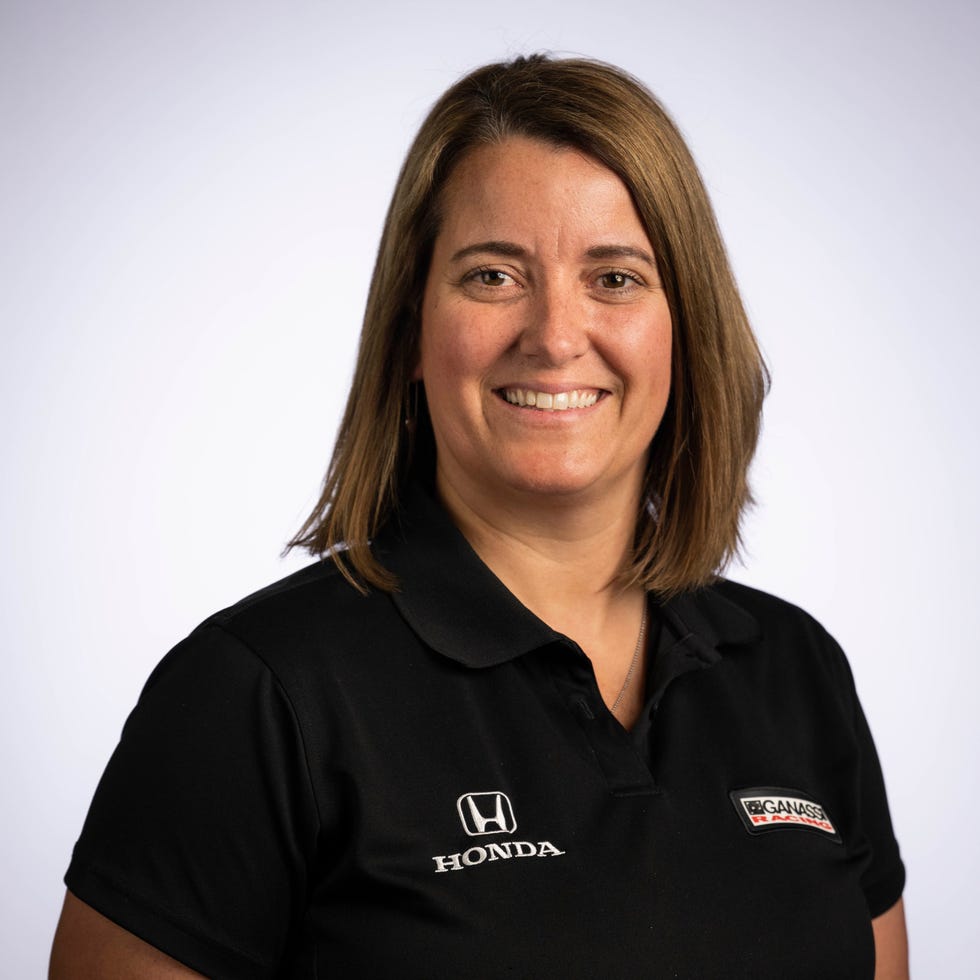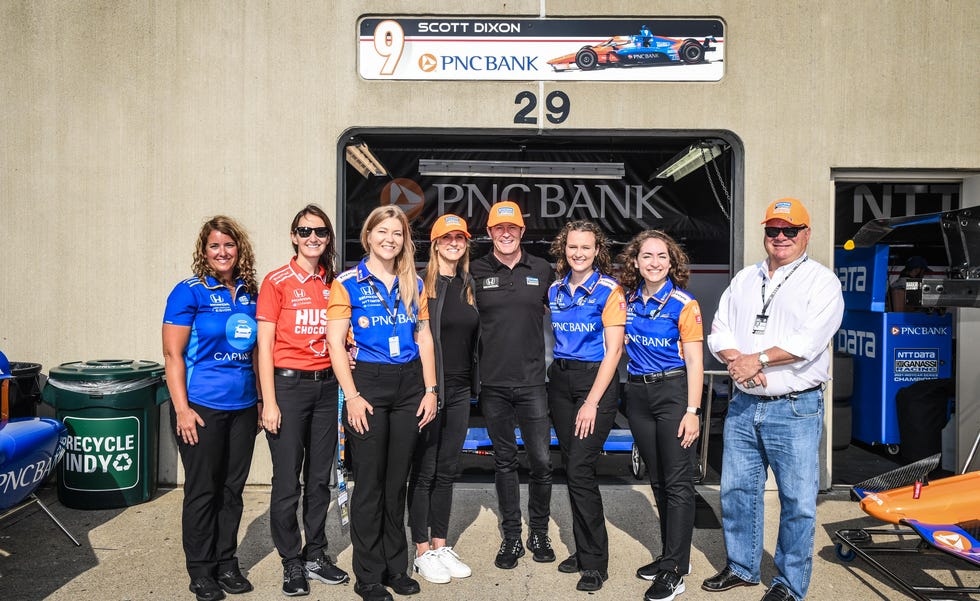It’s easy to talk about improving diversity in motorsports, harder to make any lasting change. Hang out at the track, any track (although some forms are doing better than others) and it becomes clear that there aren’t too many women working in the garages or suiting up for the hot pits. Now I can say from personal experience—almost 20 years covering various forms of racing—that it’s noticeably better than it was when I was a baby motorsports reporter, and that’s not just me imagining things. Data graphs on the career site Zippia show that the balance of male to female motorsports techs has gone from 96.1 percent male in 2010 to 92.3 percent in 2021. So it is improving, but at that rate, it’s going to take nearly a century to achieve anything close to parity. This isn’t entirely due to the evils of sexism: there aren’t as many women as men applying for racing jobs, and often young women studying engineering and mechanics don’t even realize motorsports work is an option. That’s why initiatives like the PNC Bank and Chip Ganassi Racing Women in Motorsport internship are so beneficial, and why it’s great news to hear that Ganassi Racing is repeating the program for 2023, with plans to continue it in the future.
The Women in Motorsport (WIM) program offers three paid internships working with the Chip Ganassi Racing Indycar teams. The goal is both to bring attention to the importance of diversity in motorsports hiring and to act as a pipeline for women in STEM studies to graduate into full-time positions. This worked out as planned for Rebecca Hutton, who was one of the 2022 interns, and who will be joining Ganassi Racing as a simulations engineer for 2023. Hutton told me she knew she wanted to work in racing but had no idea there were so many different kinds of jobs in the high-tech world of modern motorsports.
“There’s definitely space for women anywhere in a race team,” Hutton said. “I think the obstacle comes watching racing on TV and you’re seeing all these men going over the wall and you don’t see the women there. You don’t know what’s available or how to get involved. I think a lot of people think if you’re on a race team, you’re a mechanic.” She laughed and added, “I think some of my friends still think that I’m a mechanic.” Hutton says she loves working in simulations because she’s able to design and test different chassis designs and optimizations and get to see the data her team provides make a measurable difference in the next weekend’s race. “The building of these simulations and building the models is hugely heavy in vehicle dynamics, which was my favorite class in school. I just didn’t know that what I enjoyed in school connected to the roles within a race team, and I’m so glad I found something I like so much.”
Had Hutton wanted to be a mechanic, she could have found mentorship there from Anna Chatten, gearbox mechanic on the Scott Dixon #9 Indy car, and a 22-year veteran as a racing tech. “I came into this with little to no support,” Chatten said. “It’s been very cool for me to see the transition over the past 20 years, and there definitely has been one.” But, she says, while changes have been in the right direction, racing hasn’t moved as quickly as she would have hoped. “If you would’ve told me when I was 20 if there would still be this few female mechanics in the paddock, I would’ve thought you were crazy. I would’ve thought there would’ve been a lot more by now.” She thinks programs like the Ganassi-PNC internship can make a big difference, and she makes an effort to be a part of them. “When I came into the business there was nobody really for me to rely on or look up to. I have two girls, they’re seven and eight, and if they grow up to work on race cars I would definitely want it to be different for them. I need to participate in that act of change to make that better. Even if it’s emotional support for them on certain topics, that gets you through. You feel way less alone when there’s somebody who says, ‘Oh yeah, I’ve been there.'”
It’s not just emotional support. Chatten also offers practical encouragement to interns who might feel intimidated about the hands-on aspect of turning wrenches. “We’re not necessarily exposed to it as young women. There’s a concern as to whether you can physically do it. I always like to bust that myth. I’m not a very physically large person, but there’s always a smarter way to do your job. You can always get a longer wrench or a bigger breaker bar.”
For Ganassi himself, a man whose Twitter account includes posts of race results with the hashtag #ilikewinners, the Women in Motorsports initiative is not about personal feelings, it’s about building a better race team. “Listen, Elana,” he said before I’d even finished the first question, “I’ve never been one to do things because I want to check the box. And I don’t do things because it’s the cool thing to do or the current thing to do. I’m interested in one thing in our team, that’s performance. The women applying to this program are motivated, they bring innovation and influence and they just need the opportunity to shine. The women on my team, they’ve been engineers on the car that won Sebring last year, that won the Indy 500. They are here to win races and that’s what they bring to the team.”
He says that he notices enough of a difference in team energy and performance that if he could keep his new hires secret, he would. “In some sense, I don’t want anybody to know these women’s names. I don’t want any of the other team owners to know because I don’t want them to take them from me. They’re such good assets of the company. I’m joking, but at the top levels of this business, everyone has everything, all the same cars, tech, software. The only difference between our team and other teams are the people.” He hopes that programs like WIM will mean that future conversations needn’t be about the male/female make up of a team, because it will be so normal to have a mix that it won’t be worth talking about.
One place he does think needs more attention is in the race car itself. If women make up only about 8 percent of the motorsports workforce, the numbers behind the wheel are even worse, only 1 to 2 percent of professional drivers are women. Ganassi says that might have to do with when children are exposed to the sport. The internship program aims to attract women in college and grad school, as engineers and mechanics can make a switch to motorsports even if they originally planned on something like aerospace or consumer products. To become a professional racer at the Indy or F1 level requires starting much earlier. “Most of the drivers that are in the sport today all started racing when they were five years old, 20 years ago. There are very few women 20 years ago that were talking about getting into motorsports. And there were even fewer at five years old that had the father or the mother who were talking about it. But you have a lot more of that today, so I think we’ll see more women coming through the smaller series in the next 10 years.”
In the meantime, everyone on Ganassi’s team is excited to welcome the next group of interns for 2023. “The goal is not just to get to some number of women that we feel comfortable with,” said Angela Ashmore, engineer on the Marcus Ericsson No. 8 Indy car (pictured at top). “The goal is to end with the best team possible, and the best teams are diverse teams with unique backgrounds that can bring different points of view to problem solving.”
The three women coming in for the 2023 season are Hailey Hein, a mechanic from Arizona; Nicole Goodman, an IT specialist from Indiana; and Raegen Moody, an engineering student from Georgia. PNC Bank and Chip Ganassi Racing will accept 2024 season applications in fall of 2023. Interested applicants can learn more at
Senior Editor, Features
Like a sleeper agent activated late in the game, Elana Scherr didn’t know her calling at a young age. Like many girls, she planned to be a vet-astronaut-artist, and came closest to that last one by attending UCLA art school. She painted images of cars, but did not own one. Elana reluctantly got a driver’s license at age 21 and discovered that she not only loved cars and wanted to drive them, but that other people loved cars and wanted to read about them, which meant somebody had to write about them. Since receiving activation codes, Elana has written for numerous car magazines and websites, covering classics, car culture, technology, motorsports, and new-car reviews.



